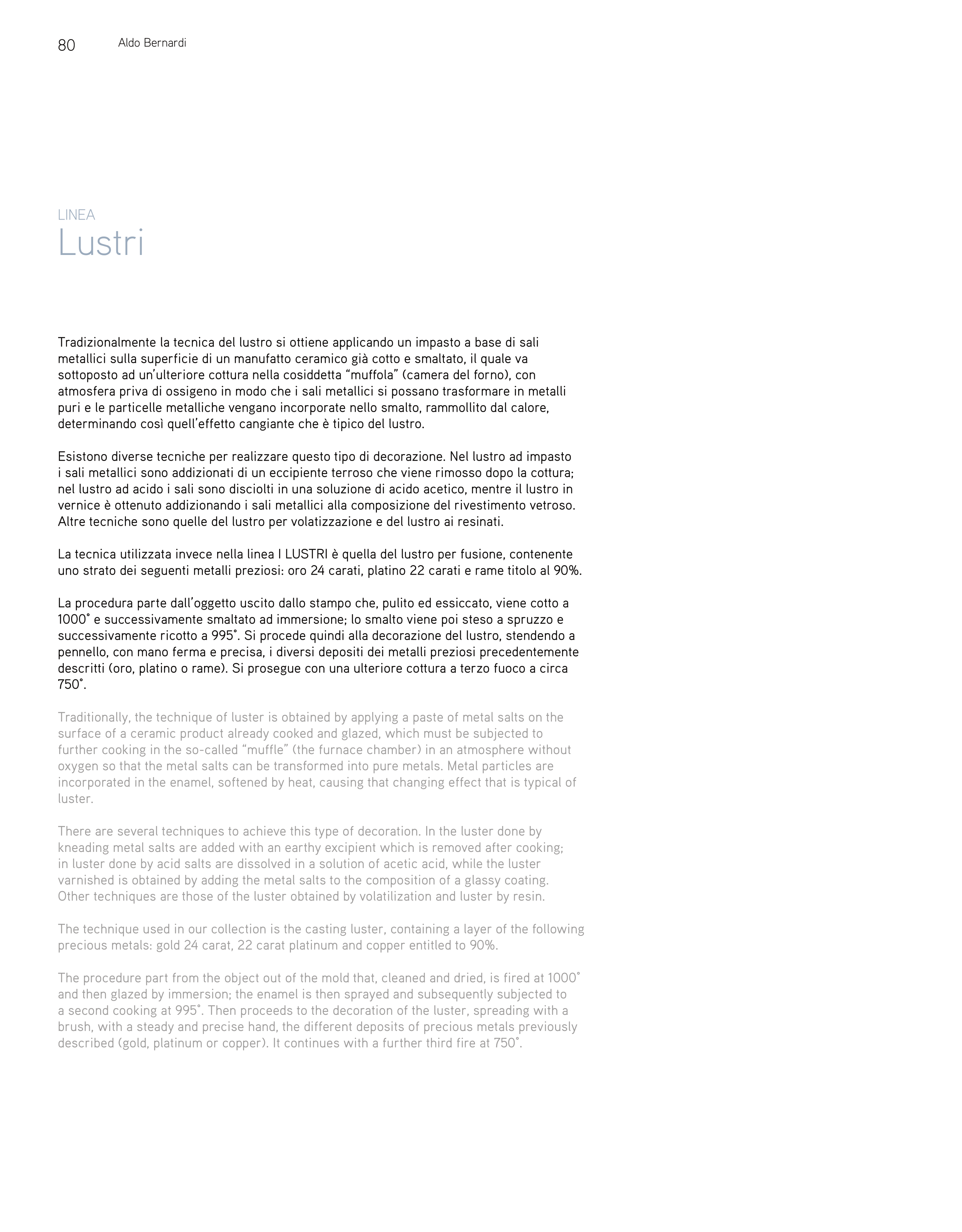Tradizionalmente la tecnica del lustro si ottiene applicando un impasto a base di sali
metallici sulla superficie di un manufatto ceramico già cotto e smaltato, il quale va
sottoposto ad un’ulteriore cottura nella cosiddetta “muffola” (camera del forno), con
atmosfera priva di ossigeno in modo che i sali metallici si possano trasformare in metalli
puri e le particelle metalliche vengano incorporate nello smalto, rammollito dal calore,
determinando così quell’effetto cangiante che è tipico del lustro.
Esistono diverse tecniche per realizzare questo tipo di decorazione. Nel lustro ad impasto
i sali metallici sono addizionati di un eccipiente terroso che viene rimosso dopo la cottura;
nel lustro ad acido i sali sono disciolti in una soluzione di acido acetico, mentre il lustro in
vernice è ottenuto addizionando i sali metallici alla composizione del rivestimento vetroso.
Altre tecniche sono quelle del lustro per volatizzazione e del lustro ai resinati.
La tecnica utilizzata invece nella linea I LUSTRI è quella del lustro per fusione, contenente
uno strato dei seguenti metalli preziosi: oro 24 carati, platino 22 carati e rame titolo al 90%.
La procedura parte dall’oggetto uscito dallo stampo che, pulito ed essiccato, viene cotto a
1000° e successivamente smaltato ad immersione; lo smalto viene poi steso a spruzzo e
successivamente ricotto a 995°. Si procede quindi alla decorazione del lustro, stendendo a
pennello, con mano ferma e precisa, i diversi depositi dei metalli preziosi precedentemente
descritti (oro, platino o rame). Si prosegue con una ulteriore cottura a terzo fuoco a circa
750°.
Traditionally, the technique of luster is obtained by applying a paste of metal salts on the
surface of a ceramic product already cooked and glazed, which must be subjected to
further cooking in the so-called “muffle” (the furnace chamber) in an atmosphere without
oxygen so that the metal salts can be transformed into pure metals. Metal particles are
incorporated in the enamel, softened by heat, causing that changing effect that is typical of
luster.
There are several techniques to achieve this type of decoration. In the luster done by
kneading metal salts are added with an earthy excipient which is removed after cooking;
in luster done by acid salts are dissolved in a solution of acetic acid, while the luster
varnished is obtained by adding the metal salts to the composition of a glassy coating.
Other techniques are those of the luster obtained by volatilization and luster by resin.
The technique used in our collection is the casting luster, containing a layer of the following
precious metals: gold 24 carat, 22 carat platinum and copper entitled to 90%.
The procedure part from the object out of the mold that, cleaned and dried, is fired at 1000°
and then glazed by immersion; the enamel is then sprayed and subsequently subjected to
a second cooking at 995°. Then proceeds to the decoration of the luster, spreading with a
brush, with a steady and precise hand, the different deposits of precious metals previously
described (gold, platinum or copper). It continues with a further third fire at 750°.
LINEA
Lustri
80
Aldo Bernardi


